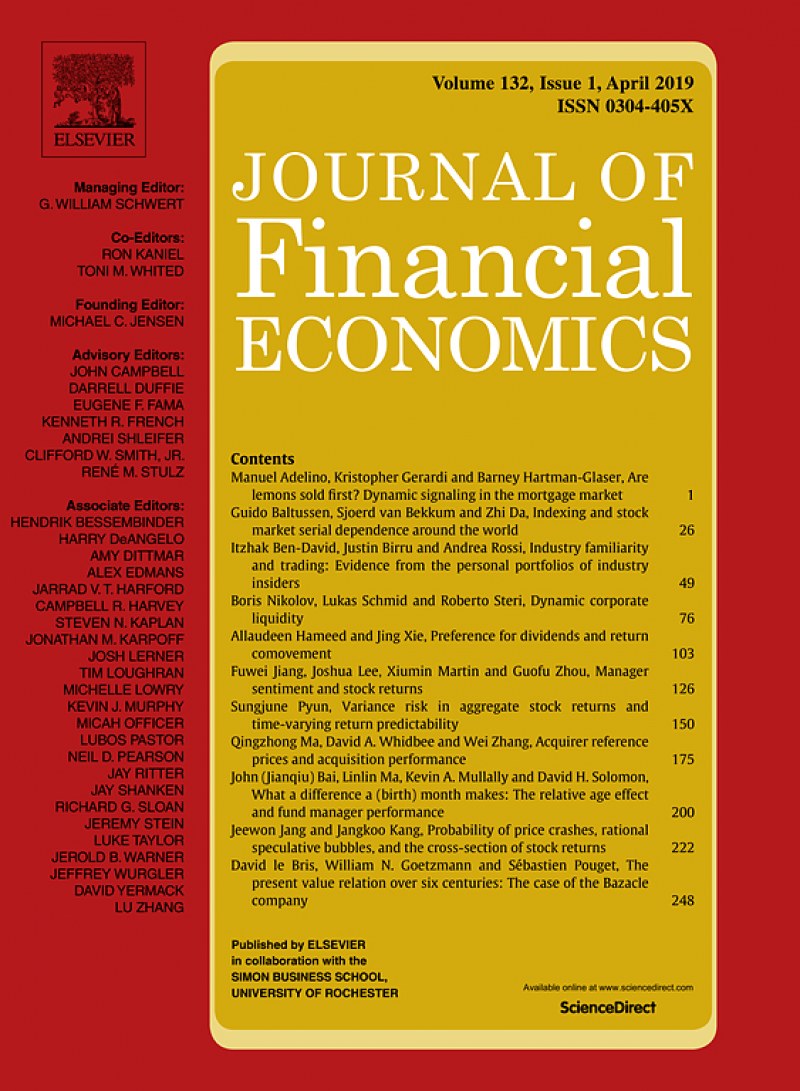Paper by fellow Michel van der Wel in Journal of Financial Economics
The paper 'An Asset Pricing Approach to Testing General Term Structure Models' by fellow Michel van der Wel is forthcoming in the Journal of Financial Economics. Joint work with Bent J. Christensen (Aarhus University).

Abstract
We develop a new empirical approach to term structure analysis that allows testing for time-varying risk premiums and arbitrage opportunities in models with both unobservable factors and factors identified as the innovations to observed macroeconomic variables. Factors can play double roles as both covariance-generating common shocks driving yields and determinants of market prices of risk in cross-sectional pricing. The evidence favors time-varying risk prices significantly related to the second Stock-Watson principal component of macroeconomic variables and to changes in the industrial production index. Our preferred specification includes these two observable and two unobservable factors, with the no-arbitrage condition imposed.